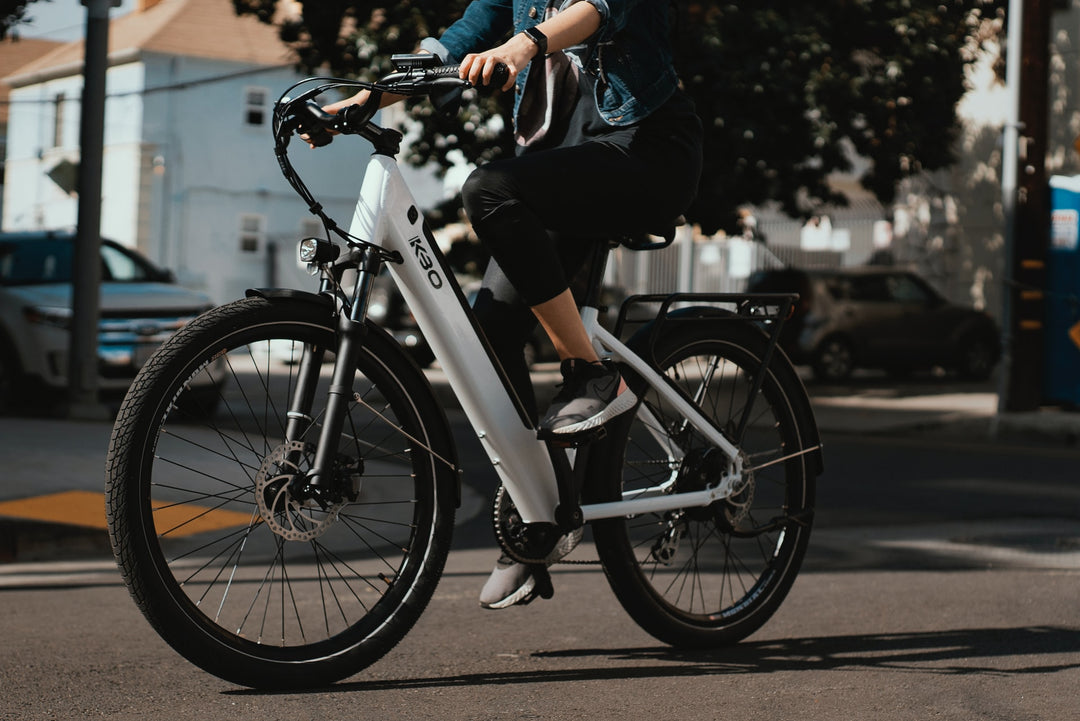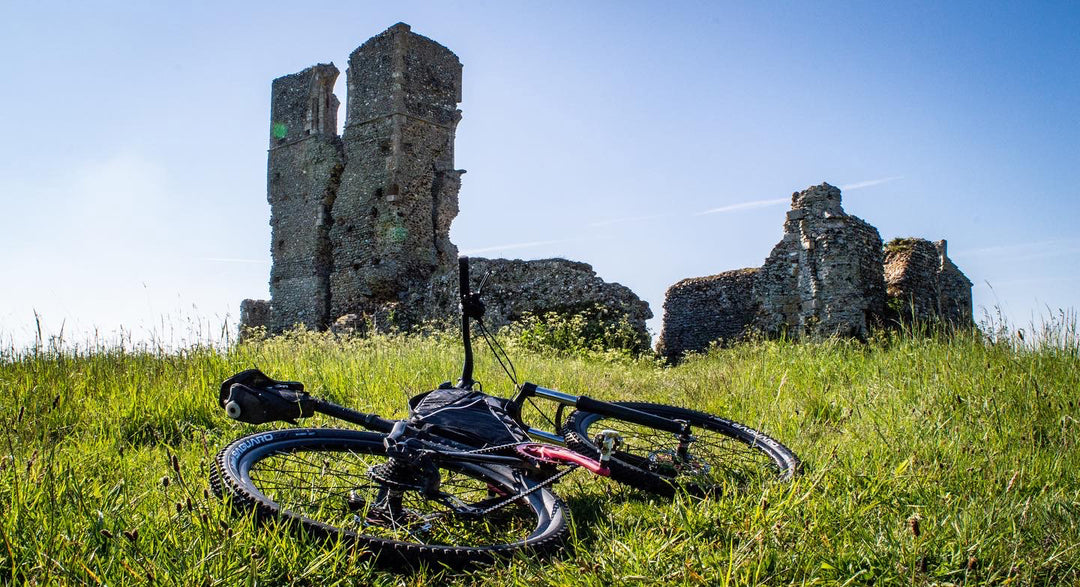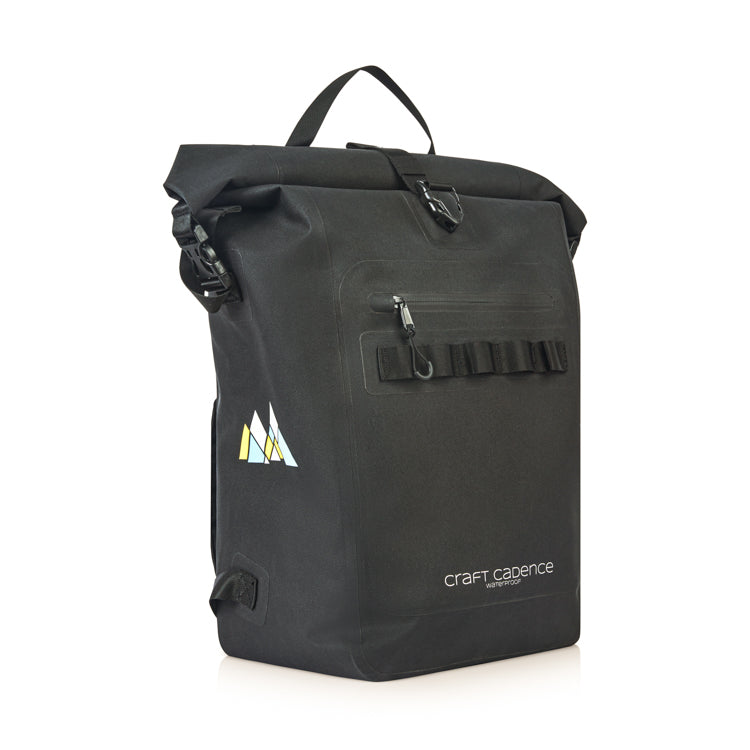Waterproof backpack for cycling - which materials are best for waterproofing?
Most cyclists at some point will decide to purchase a specialist waterproof cycling bag such as a backpack, pannier and trunk bag, for a variety of reasons. For some people, they do not want to deal with the hassle of backpack covers. For others, a truly waterproof bag provides assurance that valuable electronics do not get wet.
There are many types of materials in the market that can be used to make waterproof bags. So which material is 'the best'? The answer of course is, it depends on your use case and your priorities.
The most common materials for cycling bags are PVC, nylon, polyester and TPU, of varying grades of quality. There are also combinations of materials and coatings applied to materials to ensure waterproofing. Combined, these materials are commonly known as tarpaulin.
The quality within each material type is denoted by deniers. Denier is a unit of measurement that is used to determine the fiber thickness of individual threads or filaments used in the creation of textiles and fabrics. Fabrics with a high denier count tend to be thick, sturdy, and durable. Fabrics with a low denier count tend to be sheer, soft, and silky.
When comparing between materials, one also need to take into account the inherent strength of each material. For example, 600D nylon will be stronger than 600D polyester even though it has the same thread count.
Let's take you through each of the main players of the waterproof game.
Rough and Rugged - PVC
PVC (polyvinyl chloride) is the third most used synthetic plastic in the world and is used in a number of applications such as flooring, artificial leather, decorative sheets and of course numerous types of waterproof bags and backpacks.
PVC is a thermoplastic made up of chlorine (57%) and carbon (43%). The material is very strong, robust and resistant to water, oxidation and degradation. It is therefore very tough wearing and can last for a very long time.
PVC tarpaulin lends itself to waterproof bags because of its water resistance, high abrasion resistance and tear strength. It is also easier to keep clean because it is resistance to oils, grease and other mildew. You can simply run a hose and all the dirt, oil and grease will wash off.
Our Cadence backpack is made from the highest quality 600D tarpaulin which we have been refining since 2017. It is literally bombproof and comes with a 5 year warranty. However, there are some environmental concerns due to the toxins it releases during manufacturing. It is also a more difficult material to recycle at the end of life, compared to other materials such as nylon and polyester.
However, there are some environmental concerns due to the toxins it releases during manufacturing. It is also a more difficult material to recycle at the end of life, compared to other materials such as nylon and polyester.
The quality of PVC can range from 300D (denier) to 600D. The higher the thread count, the denser and tough is the material.
Cheap and cheerful - polyester
The most common and cheapest material used in general bags and backpacks, polyester is composed of polymers. Which means the linking of several esters within the fibers.Polyester is relatively durable and generally resistant to stretching and shrinking.
By itself, polyester is not completely waterproof so most manufacturers combine polyester with PVC or TPU to create waterproof tarpaulin.
The quality of polyester can range from 400D to 1680D, with 600D being the most commonly used.
In our opinion, polyester at 600D is not strong enough to be a quality cycling bag. It should therefore be reinforced with stronger materials such as PVC or the thread count should be increased to withstand the rigours of the elements.
Strong and comfortable - nylon
Nylon is mostly made from a polyamide fiber, which is derived from a diamine and a dicarboxylic acid.Nylon is a synthetic fabric with comes from the by-products petroleum, coal and agricultural products. The raw inputs are formed into strands and then woven into the fabric.
Nylon is known for its low absorbency rate which makes it ideal for athletic clothing, backpacks, and swimwear. It is lighter, more flexible and more comfortable to the touch.
Because Nylon is a flexible textile it appears in a range of applications. In terms of cycling bags, it is water resistant to a degree but not completely waterproof.
To make a waterproof bag, nylon is coated with other materials such as PVC and TPU (covered below).
The quality of nylon ranges from 400D to 1680D. At 1680D, nylon is extremely strong, tear resistance and long lasting. This is the level of quality one should look for in a nylon bag.
In general, nylon is a stronger material compared to polyester. At the same denier count, e.g 600D nylon versus 600D polyester, nylon is generally 1.4 times stronger.
For this reason nylon is usually more expensive than polyester. For polyester based materials to match nylon's strength, a higher thread count is required.
A fabic's ultimate waterproofing partner - TPU
Also known as thermoplastic polyurethane, TPU is a versatile elastomer with excellent abrasion resistance, waterproofing, excellent low temperature flexibility and durability.
It offers superior performance and flexibility in its processing. TPU is therefore an ideal polymer to combine with other fabrics such as nylon and polyester to make waterproof bag and backpacks.
The main advantage of waterproof bags made using combinations of nylon/TPU or polyester/TPU is that the bag remains comfortable to the touch, soft, flexible whilst at the same time being very strong, tear resistant and of course, waterproof.
This does come at a price as generally, high thread count nylon/polyester combined with TPU will be more expensive to produce than PVC.
A low-carbon new kid on the block - Recycled PET
As well as these main materials, some bicycle bag manufacturers are looking into Polyethylene Terephthalate, which is commonly known as PET.
This is mostly known through the use of clear plastics, such as soda bottles and other bottles that hold water. As a raw material PET is recognized globally as a safe, lightweight, flexible and a non-toxic material that is 100% recyclable.
The use of recycled PET can lead to significant carbon footprint improvements compared to the use of other materials, and would in all likelihood be a more environmentally friendly alternative to the main material types.
Which materials should you choose?
If price is the main concern, then it is likely that PVC or a combination of PVC/polyester will offer the best value for money. PVC is strong, tear resistant and provides high degree of waterproofing.
Nylon based tarpaulin, on the other hand, is lighter and thinner than its counterpart making for a lighter backpack. This will generally come at a higher cost but one should still check the thread count of the nylon material. It should ideally be 1680D.
If environmental concerns are important, one may look at bags made using recycled PET. Since the material is lightweight, flexible and non-toxic, it makes for a great solution and can be just as good as bags made from virgin materials.
While there are no technological barriers to higher uptake of recycled PET, the main challenge is commercial viability as it can still be expensive to produce compared to main materials. As consumers become more educated on it environmental credentials, there may be a place for recycled PET in the future.
In summary, there are positives and negatives to all materials used for a waterproof bicycle bag. Finding the material that suits your personal use is the way to go.



